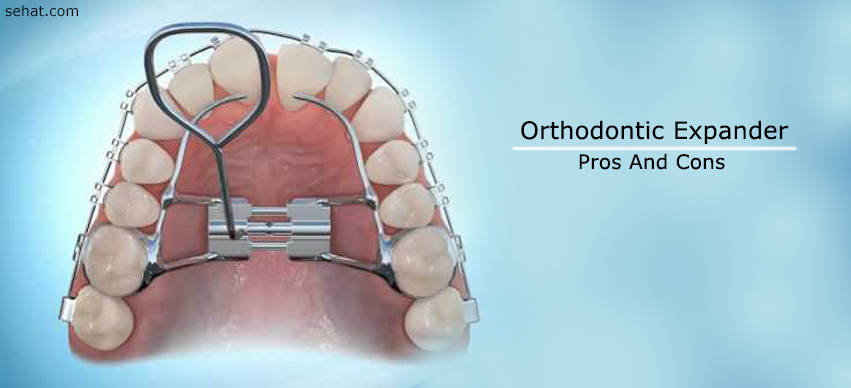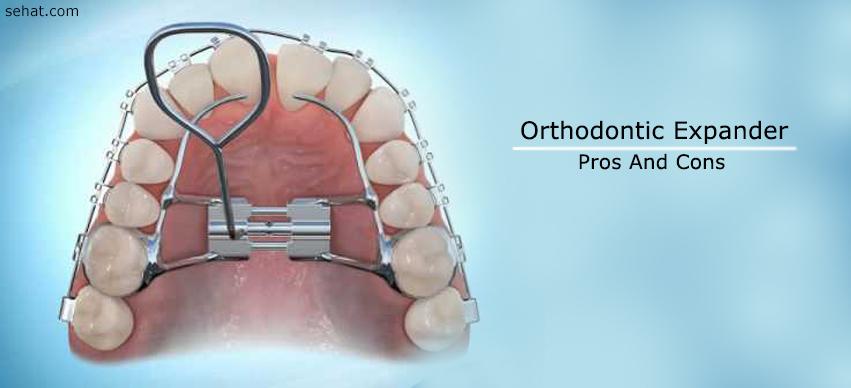How Communities Are Changing the Way We Think About Aging in..
8 Min Read


Orthodontic expanders are used to widen the palate or roof of the mouth. These are used to allow the growth of permanent teeth by providing sufficient space. It helps to improve the overcrowded as well as overlapped teeth. With the help of orthodontic expanders, the need for tooth extraction is avoided. There are various advantages and disadvantages associated with orthodontic expanders. Various advantages associated with the orthodontic expanders include improved looks, proper biting, preventing snoring and mouth-breathing, increased confidence, and avoiding complications because of improper alignment. Disadvantages associated with orthodontic expanders include high cost, requiring proper care, discomfort, pain and inflammation, and bad smell. Follow the article, to know more about the orthodontic expander pros and cons
Palatal expanders are generally used in younger patients. Palatal expanders are of various types such as spring type, screw type, rapid palatal, magnetic expander, etc. When the upper back teeth are more towards the tongue than the lower back teeth and both the upper and lower teeth fail to make a perfect fit, palatal expander are used to expand the two halves of upper jaws.
Another alternative for orthodontic expanders is Damon braces. The major difference between Damon braces and orthodontic expanders is Damon braces creates space in the mouth without any pain and discomfort to the patient.
Orthodontic expander process is painless thus can easily be done in younger patients.
Due to its small size, the expander gets easily fitted in the mouth. Further, because of its lightweight and simple design, it reduces the patient’s discomfort.
Because of the abnormal anatomy, patients may not be able to chew their food properly leading to problems related to indigestion. Orthodontic expanders help in improving the abnormality. Chewing habits of patients are significantly improved.
Because of the crowded teeth inside the mouth, sometimes the patient is not able to breathe properly. Orthodontic expander creates a room inside mouth thus improves the flow of air.
Some patients may not be able to speak properly due to reduced airflow. Orthodontic expanders, by assisting proper airflow, facilitates proper speaking.
Good looks are one factor that increases confidence. With orthodontic expander, the teeth are aligned in proper position and there is no overlapping. This results in a pretty smile and boosted personality. Change in the shape of the face with a better look can be obtained with orthodontic expanders.
By increasing the size of nasal passage, orthodontic expander avoids mouth breathing as well as prevents snoring.
In children, the expanders are in alignment with the child’s natural growth and thus effectively provide the required results. However, to get the maximum effect, use of palate expanders in adults is generally accompanied by surgery.
Because of the misalignment inside the mouth, various complications may develop. Complications include overlapping of teeth due to lack of space, improper growth as teeth are overcrowded and tooth extraction may be required.
Cost of orthodontic expanders are high and depends upon the type of material used to make the expanders.
In the initial period, which is known as the adaption period, orthodontic expander causes discomfort to the user. Expanders, especially the palate expander is in direct contact with the tongue and the jaw bone, leading to a headache.
Due to the intense pressure created by the expander, some patients experience pain and inflammation.
Special care is required for orthodontic expanders. The care for orthodontic expander includes brushing, avoiding foods that may cause damage to expanders, and removing the expanders in cases such as swimming.
When the food gets accumulated in the expanders, in case of poor care, bacterial growth occurs. this increases the risk of infection and also lead to bad smell from mouth.
During the initial adaptation period, the presence of orthodontic expanders results in speaking difficulty. This is due to discomfort as well as increased saliva secretion. The patient may not be able to properly pronounce certain words. However, studies indicate that the speech gradually becomes normal and once the expander is removed, the speech returns to its baseline.
The main concern of Orthodontic Expander treatment is to treat misaligned teeth functionally as well as aesthetically. According to the orthodontist, the ideal age group for this treatment is 12-13 years because it is more comfortable for the child to move the teeth in between the bone at the earlier ages. When the treatment is done at an early age, development of malocclusion in the mouth is prevented and the patient may avoid the surgery and use of braces. Orthodontic expanders bring with them the advantages as well as side effects. However, if the orthodontic expanders are properly fitted and are properly taken care of, they help in obtaining the desired results.